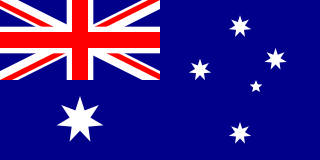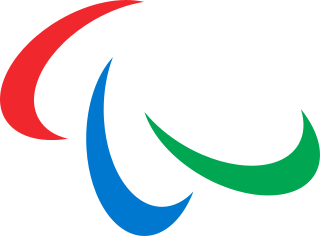
Australia participated in the 2006 Winter Paralympics in Torino, Italy, from 10 to 19 March 2006. The Turin games represented Australia's ninth appearance at the Winter Paralympic Games. Australia were represented by 10 athletes, which made it their largest ever Winter Paralympic Games contingent. Australia competed in three sports: alpine skiing, biathlon, and cross-country skiing, but not ice sledge hockey or wheelchair curling. Prior to the games, the Australian Paralympic Committee set a target of two medals, down from the seven that were won four years earlier in Salt Lake City. This was due to the retirement of three-time medallist Bart Bunting, as well as changes made to the disability classification system. This target was met with Australia winning a silver and a bronze medal to finish equal 13th on the medal tally.

The Winter Paralympic Games is an international multi-sport event where athletes with physical disabilities compete in snow and ice sports. The event includes athletes with mobility impairments, amputations, blindness, and cerebral palsy. The Winter Paralympic Games are held every four years directly following the Winter Olympic Games and hosted in the same city. The International Paralympic Committee (IPC) oversees the Games. Medals are awarded in each event: with gold for first place, silver for second, and bronze for third, following the tradition that the Olympic Games began in 1904.

The United States sent a delegation to compete at the 2010 Winter Paralympics in Vancouver, British Columbia, Canada. A total of 50 U.S. competitors took part in all five sports. The American delegation included five former members of the U.S. military, including a veteran of the Iraq War and a veteran of the War in Afghanistan.
T35 is a disability sport classification for disability athletics' running competitions. It includes people who have coordination impairments such as hypertonia, ataxia and athetosis. This includes people with cerebral palsy. The classification is used at the Paralympic Games. The corresponding F35 classification includes club and discus throw, shot put, and javelin.
Disability sports classification is a system that allows for fair competition between people with different types of disabilities.
Para-athletics classification is a system to determine which athletes with disabilities may compete against each other in para-athletics events. Classification is intended to group together athletes with similar levels of physical ability to allow fair competition. Classification was created and is managed by the International Paralympic Committee (IPC), which is regularly published via its IPC Athletics Classification Handbook. People with physical, vision and intellectual disabilities are eligible to compete in this sport at the Summer Paralympics. The classification for this sport was created during the 1940s and for much of its early history was a medical condition based classification system. The classification system has subsequently become a functional mobility based one, and is moving towards an evidence-based classification system.
Para-cycling classification is the process of classifying participants in para-cycling covering four functional disability types. The classification system includes classes for handcycles for people who have lower limb mobility issues. The sport is governed by the Union Cycliste Internationale (UCI).
Para-alpine skiing classification is the classification system for para-alpine skiing designed to ensure fair competition between alpine skiers with different types of disabilities. The classifications are grouped into three general disability types: standing, blind and sitting. Classification governance is handled by International Paralympic Committee Alpine Skiing. Prior to that, several sport governing bodies dealt with classification including the International Sports Organization for the Disabled (ISOD), International Stoke Mandeville Games Federation (ISMWSF), International Blind Sports Federation (IBSA) and Cerebral Palsy International Sports and Recreation Association (CP-ISRA). Some classification systems are governed by bodies other than International Paralympic Committee Alpine Skiing, such as the Special Olympics. The sport is open to all competitors with a visual or physical disability. It is not open to people with intellectual disabilities.

Para-snowboarding classification is the classification system for para-snowboarding. The sport originally called Adaptive Snowboard is now practiced by hundreds of athletes around the world. The International Paralympic Committee (IPC) defines three classes: SB-LL for athletes with a physical impairment affecting one or both legs, and SB-UL for athletes with a physical impairment affecting one or both arms who compete standing. The sport made its official Winter Paralympic debut in the 2014 Winter Paralympics in Sochi, Russia.

Para-Nordic skiing classification is the classification system for para-Nordic skiing which includes the biathlon and cross-country events. The classifications for Para-Nordic skiing mirrors the classifications for Para-Alpine skiing with some exceptions. A functional mobility and medical classification is in use, with skiers being divided into three groups: standing skiers, sit skiers and visually impaired skiers. International classification is governed by International Paralympic Committee, Nordic Skiing (IPC-NS). Other classification is handled by national bodies. Before the IPC-NS took over classification, a number of organizations handled classification based on the type of disability.

Para-archery classification is the classification system for para-archery used to create a level playing field for archers with a different range of disabilities. Governance in the sport is through the International Archery Federation. Early classification systems for the sport were created during the 1940s and based on medical classification. This has subsequently changed to a functional mobility classification with the exception of blind archery.
Paralympic powerlifting classification is the system designed for disability based powerlifting to ensure that there is level competition across a range of disabilities. Categories are broken down based on weight. The sport's classification is governed by International Paralympic Committee Powerlifting. People with physical disabilities are eligible to compete in this sport.
Paralympic Shooting classification is the shooting classification in place for the Paralympic Games to help establish fair competition. Classification is governed by the International Paralympic Committee's IPC Shooting. While there are currently three classifications, there were originally five in international competitions. People with physical disabilities as defined by the International Paralympic Committee are eligible to compete.
Disability table tennis classification is the disability sport classification process for para table tennis that is governed by the International Table Tennis Federation. The sport's classifications are open to people with physical and intellectual disabilities.
Para-equestrian classification is a system for para-equestrian sport. It is a graded system based on the degree of physical or visual disability and handled at the international level by the FEI. The sport has eligible classifications for people with physical and vision disabilities. Groups of eligible riders include The sport is open to competitors with impaired muscle power, athetosis, impaired passive range of movement, hypertonia, limb deficiency, ataxia, leg length difference, short stature, and vision impairment. They are grouped into five different classes to allow fair competition. These classes are Grade I, Grade II, Grade III, Grade IV, and Grade V(Grade Names Changed as of Jan 2017). The para-equestrian classification does not consider the gender of the rider, as equestrines compete in mixed gender competitions.
Boccia classification is the classification system governing boccia, a sport designed specifically for people with disabilities. Classification is handled by Cerebral Palsy International Sports and Recreation Association. There are four classifications for this sport. All four classes are eligible to compete at the Paralympic Games.
Football 7-a-side classification is the classification system governing Football 7-a-side. The classifications are governed by the Cerebral Palsy International Sports and Recreation Association (CP-ISRA).
Paralympic sledge racing classification is the classification system for sledge racing that is based on functional mobility related to how people sit in a sled.

Para-equestrian is an equestrian sport governed by the International Federation for Equestrian Sports (FEI), and includes two competitive events. One is para-equestrian dressage, which is conducted under the same basic rules as conventional dressage, but with riders divided into different competition grades based on their functional abilities. The other is para-equestrian driving, which operates under the same basic rules as combined driving but places competitors in various grades based on their functional abilities.
CP4 is a disability sport classification specific to cerebral palsy. In many sports, it is grouped inside other classifications to allow people with cerebral palsy to compete against people with other different disabilities but the same level of functionality. Compared lower number CP classes, they have fewer issues with head movement and trunk function. They tend to use wheelchairs on a daily basis though they may be ambulant with the use of assistive devices.







